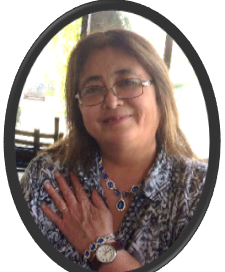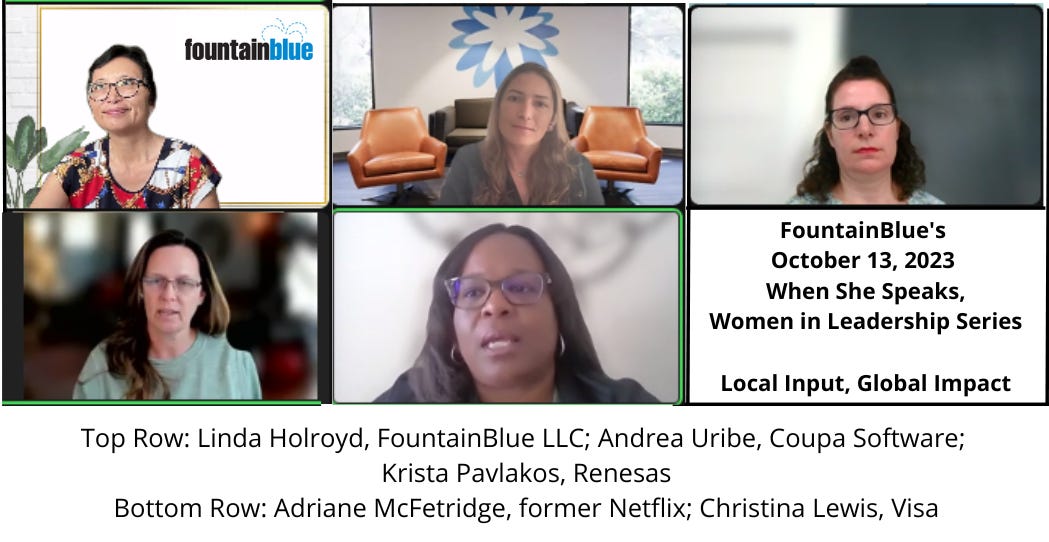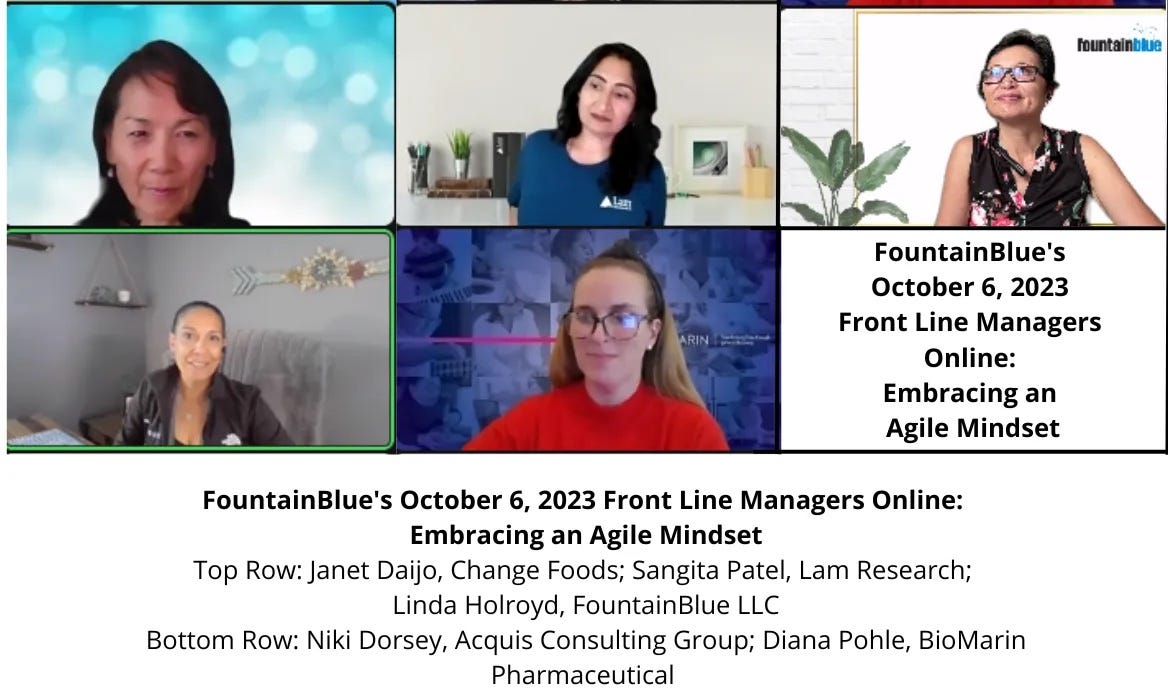Wisdom from My Sister Lori
It’s been a very long three months for myself and my family. We went from a question of ‘What’s this bump’ to a series of ‘celebration of life’ ceremonies with many trips to emergency in between.
My sister, Lori May Kloesel was wise and warm, understated and perennially kind and generous. Lori’s loving, calming presence was always grounded, and always sprinkled with good humor and deep acceptance. Below are the top ten words of wisdom I learned from her.
1. Life is Fleeting.
Lori practiced the grace of wisdom, learning directly and indirectly from what life had to offer. She taught me that we shouldn’t count on having a day, a month, a decade more than we’ll get. For life can be fickle and fleeting, and life can hit you from any direction.
2. Put your People first.
Lori’s tagline was ‘It’s always about your people.’ She selected many to be her people, including her husband, her five kids, her many friends and family. She always puts her people first, making them feel like they are important, valued, supported and loved. (This was true even if she didn’t agree with our current choices.)
3. Focus on the Being, Rather than the Doing.
While I’ve always been the ‘do-er’, Lori has generally been the ‘being’. She is the wiser of us both.
4. Laugh through the Tears.
Lori regularly connected deeply with people, laughing and crying through life’s joys and trials.
5. What’s Mine is Yours.
Anything and everything Lori owned would be readily and eagerly gifted to any of her people who asked. Her generous and warm spirit lives on in all of her children.
6. Practice Patience.
Lori had the patience to raise five wonderful and diverse children, make joong (a sticky rice dish wrapped in bamboo leaves), perfect a roasted pork recipe, nurture a thriving garden, sew meticulous patterns, and endure and live on through life’s twists and turns, ever with grace.
7. Choose Calmness and Kindness to all.
Lori’s sweetness and generosity, kindness and calmness was contagious and touched us all.
8. Live Life with Relish.
Lori lived her life with gusto, enjoying great food, traveling, skiing, gardening, sewing and taking many adventures with family and friends.
9. Share Your Stories.
Lori tells us that our stories keep the memories going, and help share the wisdom of those who came before us. Please share yours with those you love.
10. Family - those that you’re born to and those who adopt you - is everything.
Make time for your family and friends today. And share Lori’s wisdom.
May the wisdom from my sister spread to you and those you love.
Notes from last month’s When She Speaks Online Program
FountainBlue's October 13 When She Speaks program was on the topic of 'Local Input, Global Impact'. Please join me in thanking our esteemed panelists.
Facilitator Linda Holroyd, CEO, FountainBlue
Panelist Christina Lewis, Senior Director, Global Finance, Visa
Panelist Adriane McFetridge, former Director of Engineering, Board Member, Netflix
Panelist Krista Pavlakos, Vice President, Digital and Communications, Renesas
Panelist Andrea Uribe, Deal Desk Specialist, Coupa Software
Our panelists represented a wide range of backgrounds and perspectives. Below is a compilation of their best practices for acting locally and delivering impact globally.
Be Leaderly
Be passionate leaders and managers who work tirelessly to deliver measurable outcomes, both locally and globally.
Be creative and strategic, listening deeply and openly to the voice and the needs of the local people, while ensuring the global impact of the decisions made, the projects undertaken.
Take a global view of the world, for all companies and leaders need to do so to remain relevant and competitive.
Deliver to Local Interests and Needs
Respect the local customs and cultures and deliver products and solutions to their tastes and interests.
Meet people where they are, rather than expecting them to accommodate your style of communication, your personal taste or style.
Practice less bureaucracy and red tape, while also conforming to requirements and obligations.
Introduce engineers to customers so that they better understand the preferences of individual customers.
Leverage technology to customize solutions which suit local preferences.
Maintain Structure and Support for Global Organization
Take a systemic view, delegating ownership, providing options which are fully supported by the organization overall.
Provide guidelines and guardrails so that local entities remain in compliance with requirements, laws, protocols, rules, etc.,
Adopt the best of both worlds: a corporate platform with segments and sections for different locations.
Act in Community
Support employee groups and help them represent local interests, local preferences.
Provide mentorship and sponsorship opportunities and welcome input from a wide range of people.
We next talked about how getting more women in to tech might be one action and strategy to have more global impact. Whether or not that's true, we did believe that having more women in technology *would* make a difference for themselves and those they touch. Therefore, we brainstormed how to get more women in to technology jobs:
Act as Role Models
Frame roles in tech that are *not* about engineering/ technology
Praise young girls for being math-letes
Tell stories focusing on the impact and the experience
Share the many options and opportunities within and around tech
Make technology jobs and tasks seem more interesting, creative, sexy and fun
Encourage and support strong male advocates
Reduce conscious and unconscious bias
We ended by stating that it doesn't get more 'local' than each of us as individuals. So we challenge everyone to live with intentionality for a principle, a value, a cause you believe in, and work to make those principles contagious, spreading for global impact.
Notes from last month’s Front Line Managers Online Program
Thank you for joining us for FountainBlue's October 6 Front Line Managers Online program, on the topic of 'Embracing an Agile Mindset'. Please join me in thanking our panelists.
as a Program Leader - Janet Daijo, Change Foods
as an Engineering Leader - Sangita Patel, Lam Research
as a Marketing Leader - Diana Pohle, BioMarin Pharmaceutical
as a Business Leader - Niki Dorsey, Acquis Consulting Group
Our esteemed panelists represented a wide range of backgrounds and experiences, but they had much in common:
They thought, spoke and acted with agility and focused on the needs of the organization, the teams and the individuals.
They embrace continuous learning and bring a positive attitude and leadership/management style to their organizations.
They are exceptional and positive communicators with inspiring messages that connect and empower.
Below is a summary of thoughts and strategies on how to adopt an agile mindset.
Know Yourself
Embrace both your strengths and your weaknesses.
Work with people not-like-you and embrace opportunities to see the world from *their* perspective.
Connect with and lean on the team to help you know yourself and become a better version of yourself.
Develop Yourself
Be flexible and adaptive, especially in ways where you don't feel comfortable.
Nurture yourself so that you're bold enough to do the uncomfortable in order to learn and stretch.
You don't have to have deep understanding and knowledge for all things, but it would benefit you and others if you embrace opportunities to learn and grow.
Nurture the Team
Emphasis the 'what' rather than the 'who' when there's an issue, inviting all to brainstorm on how to improve outcomes next time.
Communicate and connect with transparency and authenticity, working with individuals and with the team, and working on the team dynamics.
Consistently practice open and respectful discourse within your team, with a focus on delivering results.
Leverage updated information on customer needs, market trends, technology availability, team dynamics, etc., to help you team proactively think, speak and act differently.
Respect the Flow
Adopt a growth mindset and a positive, can-do attitude, making it contagious for the team/group/organization to adopt.
Set the target requirements, offer the tools and processes, provide examples, model the way, but don't insist on the adoption of agile technologies and mindset.
Make the plans, work the plans, but flow with the inevitable curve balls which may shake up those buttoned-up plans, embracing them as learning and growth opportunities.
Push Through Together with Resilience and Resourcefulness
Agilely work with the team to deliver results with resilience and resourcefulness, in alignment with corporate mission, vision and values.
Manage expectations so that they are realistic, emphasizing successes and learnings, even when there's an overall 'failure'.
Proactively plan a pivot, in alignment with market trends and business imperatives.
Nurture a culture which embraces failure as a learning opportunity.
We ended with a brainstorm on how to help everyone embrace an agility mindset:
Lead by Example
Communicate Clearly
Understand where they’re coming from
Collaborate
Share your experience
Learn their perspective
Encourage innovation
Know the history/context
Market trends
Business Case
Training
Understanding the roadblocks
Embracing agility is a difference maker, and we hope these thoughts help you personally become more agile, and introduce more agile, flexible perspectives in the workplace.
Notes from last month’s VIP Roundtable Online Program
FountainBlue's October 13 VIP Roundtable was on the topic of 'Hyperautomation Use Cases'. Our executives in attendance represented a wide range of backgrounds, industries and experiences. Below is a summary of their thoughts.
Per Gartner: Hyperautomation is a business-driven, disciplined approach that organizations use to rapidly identify, vet and automate as many business and IT processes as possible. Hyperautomation involves the orchestrated use of multiple technologies, tools or platforms, including: artificial intelligence (AI), machine learning, event-driven software architecture, robotic process automation (RPA), business process management (BPM) and intelligent business process management suites (iBPMS), integration platform as a service (iPaaS), low-code/no-code tools, packaged software, and other types of decision, process and task automation tools.
Extending beyond that definition, our executives commented that hyperautomation offers significant benefits including:
It's easier to leverage hyperautomation to deliver 'high-volume, low-mix' solutions, but more challenging to deliver 'low-volume, high-mix' solutions. However, 'low-volume, high-mix' solutions will be in increasing demand, and can offer premium up-sides for revenues earned for vendors as well as value provided for customers.
Many companies are already leveraging a combination of robots, AI, Generative AI, machine learning and sensors in their day-to-day operations. The challenge is to continue optimizing the integrations so that the solutions are high impact *and* high quality, reliably delivered, as well as cost-effective.
Hyperautomation practices are now used not just to improve efficiencies and operations, but even now to facilitate innovation. For example, hyperaumation can quickly conduct trial-and-error experimentation on combinations of tools, processes and technologies to address specific scenarios.
Below is advice for embracing hyperautomation practices.
Hyperautomation solutions will be more heavily adopted, and companies need to continue to embrace them to remain competitive.
Focus on the specific needs, understand the metrics for success, and experiment with small batches.
Employ hyperautomation practices to address predictive maintenance needs.
Leverage 3D printing and 3D modeling to create tighter loops while conducting trial-and-error experiments.
Leverage simulation and automation tools on a range of scenarios so that you can make plans before going into production.
Leverage digital twins to record, monitor and even conduct root cause analysis.
Invite creative, out-of-the-box options as you create a hyperautomation solution.
Below are thoughts on the role of humans as we increasingly embrace hyperautomation practices:
Provide a detailed perspective on the purpose of the hyperautomation, including the stakeholders involved and the metrics for success.
Clearly define the 'guardrails' for what will be automated, what (product, team, technology, etc.,) is involved, who is involved, what resources are available, as well as milestones and timelines, etc.,
Understand the types of vectors (cost, revenues customer, technology, resources, etc.,) and the rankings for these vectors as you evaluate difference hyperautomation options.
Consider additional use cases for the selected hyperautomation option, as well as the learnings.
Ensure that the hyperautomation solution is in alignment with corporate strategy, mission, vision and values, as well as to market trends and customer needs.
Communicate the value of the selected solution and engage internal and external stakeholders in successful integration and delivery.
Use judgment and wisdom to help ensure hyperautomation solutions are safe, even to the point of developing functional safety standards.
We closed the discussion talking about the opportunities ahead as there's an increased cadence for global innovation.
There's an opportunity for experts to become agents of change.
There's an opportunity for us to work together to solve higher-order problems such as climate change.
There's an opportunity to build an ecosystem and the infrastructure we need to better thrive together.
But challenges remain.
How can we as individuals, as organizations, as industries, help more people position themselves to participate and benefit from these solutions?
What can we all do together to put safeguards in place and focus on delivering the greater good, leveraging hyperautomation solution?
What will YOU do together by yourself or collectively to make a difference?Thank you for reading this month’s FountainBlue newsletter. Feel free to share this newsletter with others in your network. We hope that you will join us for an upcoming event.







